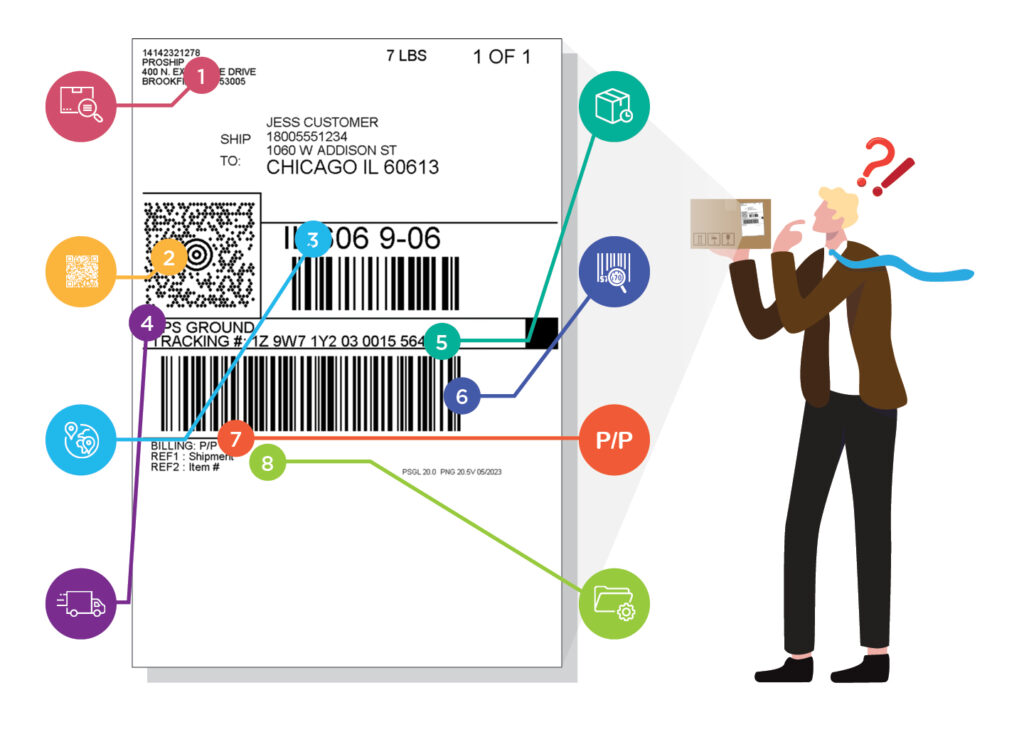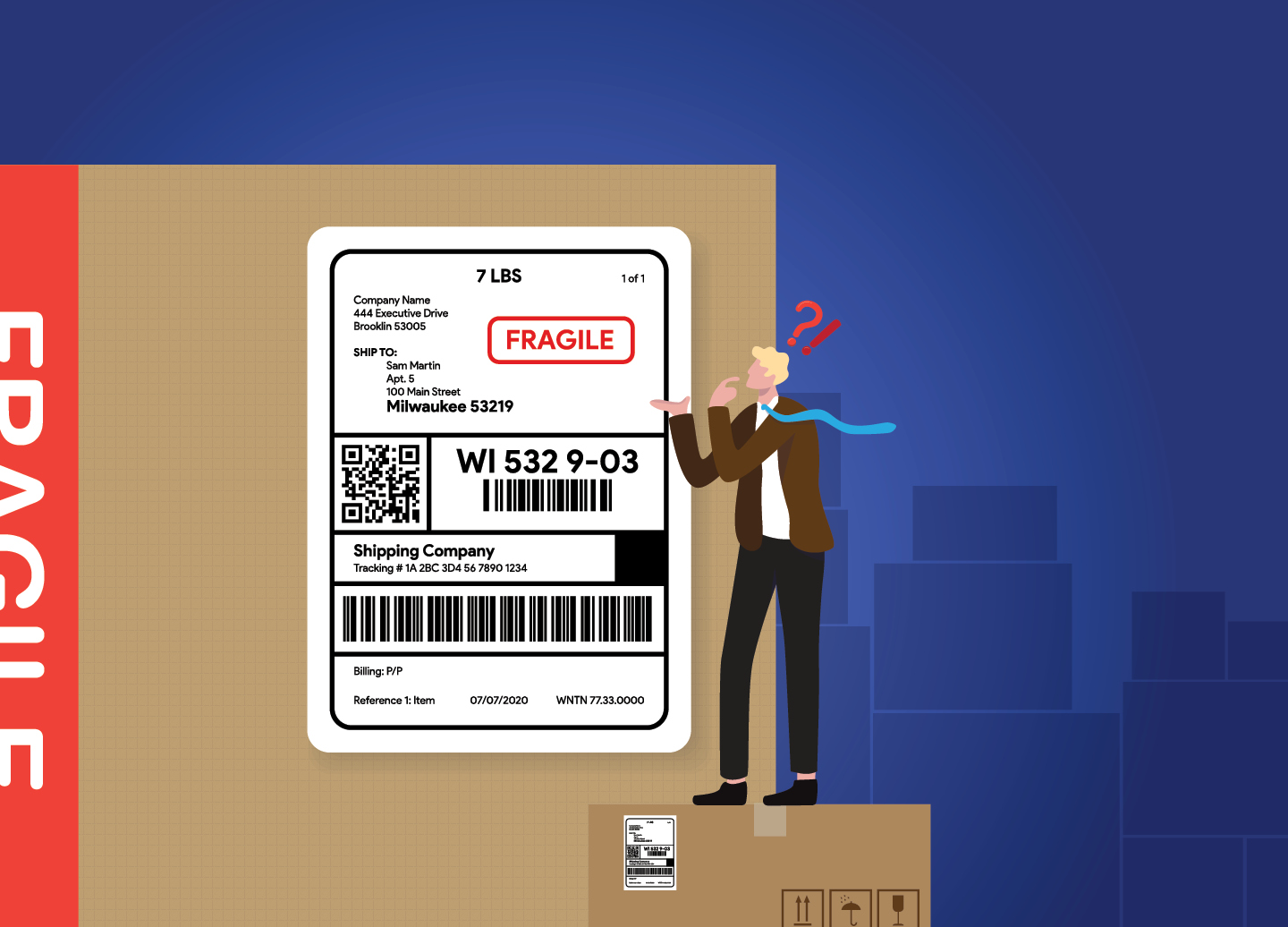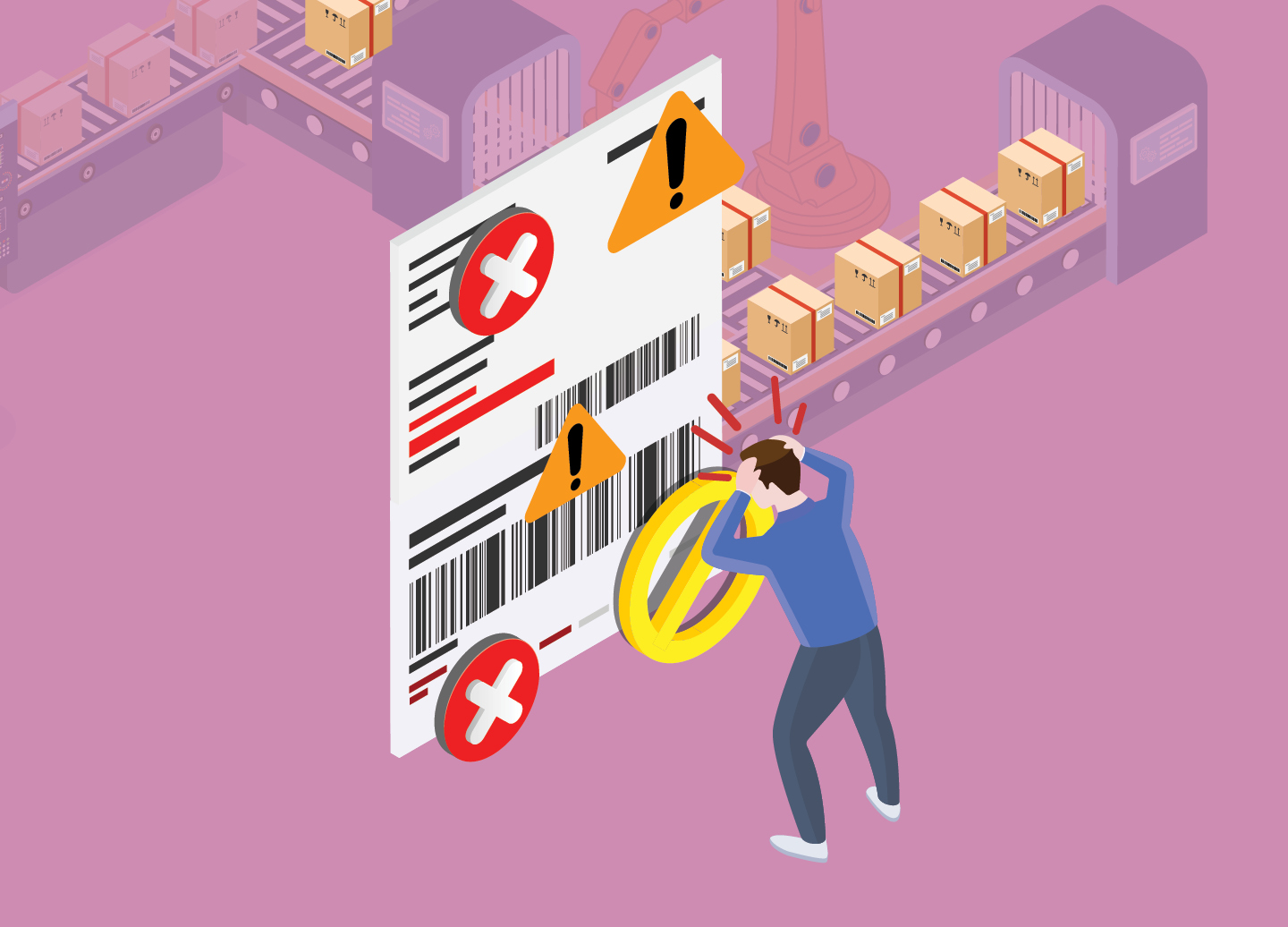Ever wonder what all of those barcodes and symbols mean on a shipping label? ProShip breaks it down for you.
Shipping labels can look complex. With an array of barcodes, numbers, and symbols, deciphering them can leave both shippers and recipients scratching their heads. In this blog, we’ll explore the 8 parts of information on a common UPS shipping label.
Although not identical, labels for other domestic shipping carriers, such as FedEx and USPS, will contain similar information. International shipping labels may include addition information.
8 Parts of a Shipping Label
Labels have important information that helps packages move from one place to another. Knowing their parts can make shipping faster and help businesses make smarter, more efficient shipping decisions.

(1) Origin and Destination Addresses: The top left corner contains the “shipping from” (origin) address, and the middle section displays the “ship to” (destination) address. This area also provides the weight of the package and the number of packages within the shipment. This information is essential for effective handling and delivery.
(2) Unidirectional Code (Also known as a Smart Label, QR Code or MaxiCode): In our example, this Smart Label appears as a square image with a target icon in the middle. These machine-read codes route packages efficiently as they travel via conveyor belt through shipping facilities.
(3) Destination Details: This section focuses on the package’s final destination. The first two letters indicate the state, the first three numbers represent the first three digits of the zip code, and the 9-06 code specifies an internal UPS region and district.
(4) Carrier and Service Information: This part indicates the carrier (e.g., UPS) and the specific service or shipping method chosen for shipping. It may display options such as “UPS GROUND,” “UPS NEXT DAY AIR,” or any other services the carrier provides.
(5) Tracking Number: Each shipping label has a unique tracking number that monitors the progress of the package it is adhered to. This code is a combination of letters and numbers and can be anywhere between 8-40 characters in length. You can then track your package on the carrier website or mobile app to determine when and where someone last scanned it using this code.
(6) Primary Barcode for Tracking: The larger barcode on the label serves as the primary tracking identifier. Whenever the package reaches a new stage of its journey, someone scans this barcode. These scans provide the information that can be accessed via the tracking number.
(7) Billing Option: This area indicates the billing option chosen for the shipment. For example, “P/P” stands for pre-paid, while “T/P” represents third-party billing, and “F/C” denotes freight collect.
(8) Reference Information: The shipper has the option to include any relevant reference details about the package. This can include info such as item numbers, item names, or category information. You can add up to 5 reference numbers to each UPS label. Reference info is valuable and can streamline internal processes and clarify the contents of a package.
Symbols, barcodes, numbers, oh my! View our Parts of a Shipping Label infographic to learn what each piece of information means.
A final note on shipping labels
While shipping labels may vary slightly based on carrier preferences, many of them will feature these essential elements. No matter which carrier you use, ProShip is here to simplify your shipping experience – handling the label details all the way to the printer. With ProShip, you can eliminate the guesswork and ship like a pro, ensuring efficient and reliable deliveries for your business.
Schedule a discovery call with a ProShip Shipping Expert to learn how multi-carrier shipping software can supercharge your parcel shipping strategy today.

 Back to Blog
Back to Blog





